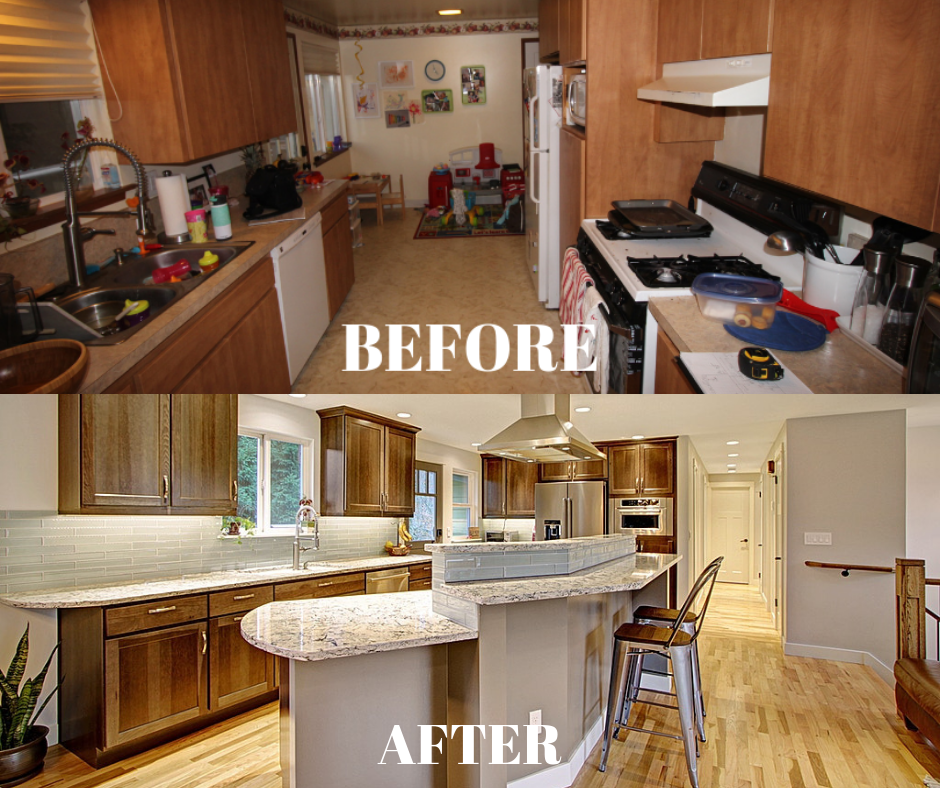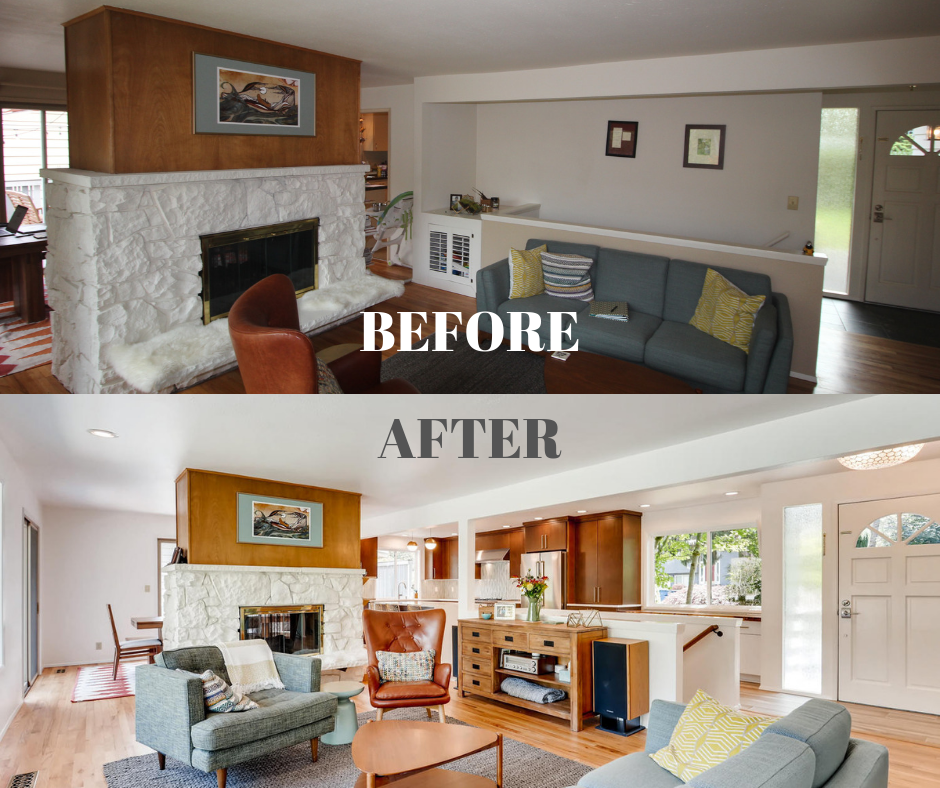Does this scenario sound familiar? You’re at a holiday party. It’s time to eat. To get through the dinner line, you’ve got to squeeze through the antiquated galley kitchen. The bottle neck is frustrating. You do all you can to avoid spilling your plate while performing some sort of messed up dance version of Twister meets Tango. You get through the line only to realize you’ve forgotten the essential condiment, but you concede, there’s no way your going back to that kitchen!
A cramped kitchen is no fun for guests but if you are the homeowner you are reminded of these deficiencies daily. Preparing a meal is more than a chore and often hazardous. In the cramped kitchen you are cutoff from the rest of the house. You must caravan the meal out to a different room with enough space to sit and eat. The thought of entertaining comes with so much anxiety you avoid hosting all together. It’s no surprise that for the last few years the most common inquiry we get related to kitchen remodeling is to open the floor-plan.
I wish that it was as easy as they make it seem on TV.
 This type of complex remodel is, in most cases, a great idea. I wish that it was as easy as they make it seem on TV. There are some serious questions you’ll need to ask in order to determine if a wall removal is the right fit for you and your home. The price of removing a wall, even if it is non-load bearing will increase the overall cost of your remodel. Therefore, you should have some compelling reasons to want to do this type of project. It’s helpful to jot down a list of benefits that a wall removal will bring. Here’s some examples:
This type of complex remodel is, in most cases, a great idea. I wish that it was as easy as they make it seem on TV. There are some serious questions you’ll need to ask in order to determine if a wall removal is the right fit for you and your home. The price of removing a wall, even if it is non-load bearing will increase the overall cost of your remodel. Therefore, you should have some compelling reasons to want to do this type of project. It’s helpful to jot down a list of benefits that a wall removal will bring. Here’s some examples:
- Increase space to add an island
- Increase space to add more appliances or storage.
- Better flow of traffic in the space.
- Improved workspace (meal prep/ clean up) orientation.
- Integration of adjacent space such as a living or dining room.
- Bring more light into the kitchen.
Once you’ve identified the benefits open space will bring to your home, you’ll want to start thinking about how the wall removal will impact the remodel scope and budget. Here’s an example of the analysis we take into consideration during the initial phase of our wall removal projects:
- With the help of your General Contractor, you’ll need to determine if the wall in question is load bearing. Doing so will help to define the necessary pre–construction steps (plan development, engineering, permits, etc.) and sharpen the focus of the scope of work to be done.
- Next, determine what is currently inside of that wall. Electrical? Plumbing? HVAC? Accounting for that utility re-work is important to the scope and will impact the cost.
- Bear in mind, you’ll also likely affect the flooring, drywall, and paint on both sides of the removed wall. This impact can drive the scope of work into other rooms if there isn’t a natural break.
- If the load bearing wall is located on a second floor, there will likely be some renovation required in the floor below to properly transfer those new load points to a footing at ground level.
You could be looking at as much as a 60% increase to the overall remodel cost with a load-bearing wall removal.
As you can see, there’s a lot to consider when removing a wall. You could be looking at as much as a 60% increase to the overall remodel cost with a load-bearing wall removal. Frankly, it’s these scope increases that will sometimes jump the price beyond one’s budget and or the reasonable return on investment value.
 Fortunately, there are cost effective solutions to open space without going into a full-scale wall removal. Some alternatives could include integrating intermediate support posts under beams to open short sections of walls, alternative light sources, or even a better cabinet layout within the existing floor-plan. In addition, the use of 3D renderings will go a long way to show what is possible within your kitchen whether the walls comes out or not. Understanding all your options and cost implications is the most important key when deciding to eliminate your wall. A general contractor with experience in wall removal renovations is the first call you should make to get those answers.
Fortunately, there are cost effective solutions to open space without going into a full-scale wall removal. Some alternatives could include integrating intermediate support posts under beams to open short sections of walls, alternative light sources, or even a better cabinet layout within the existing floor-plan. In addition, the use of 3D renderings will go a long way to show what is possible within your kitchen whether the walls comes out or not. Understanding all your options and cost implications is the most important key when deciding to eliminate your wall. A general contractor with experience in wall removal renovations is the first call you should make to get those answers.
